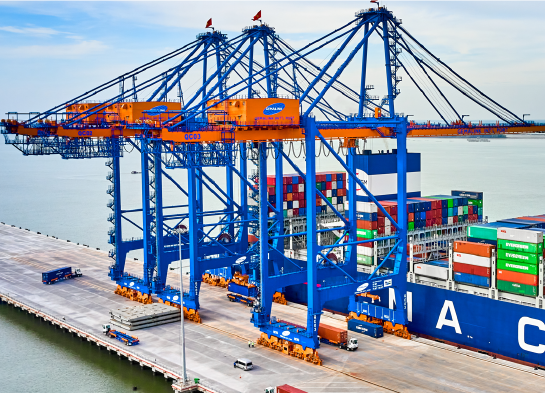One of the principal contributors to Vietnam’s progressing economy is the rise of the shipping industry and the development of ports. From January 1998 to July 2022, Vietnam’s total exports witnessed an average growth rate of 17.3%. Moreover, the country’s total exports achieved USD 34.9 billion in August 2022, while imports reached USD 31.1 billion. In the same period, the Vietnamese Trade Balance witnessed a surplus of USD 3.9 billion.
Investing in Vietnam? See Our A-Z Business Setup Services
Addition of 10 new seaports
According to a recent study by the Vietnam Maritime Administration, the amount of cargo moving through Vietnam’s seaports remained high in the first part of 2022, hitting almost 180 million tonnes in the first three months, an increase of 4% compared to last year.
In order to cater to the rising demand, ten ports were built recently. The total count of seaports in Vietnam is 296 as of April 2022, according to Ministry of Transport Decision 552/Q*-BGTVT. Here are some of the recently built ports:
- Nosco port (Quảng Ninh)
- Long Sơn port, a part of Nghi Sơn seaport
- Hải Hà – Quảng Trị petroleum port
- The port of Duyen Hai power station (Trà Vinh)
Deep integration of the Vietnamese economy enables all ports to serve as a center for goods trade, according to the Maritime Administration of Vietnam.
Lien Chieu Port planned for Danang
The port project in Lien Chieu, located in the city of Da Nang, is nearing completion of administrative procedures to initiate the construction work. As part of the project, breakwaters will be constructed, dredging will be done, and new expressways and roads will connect the port complex with the city. According to Ho Ky Minh, vice chairman of the city government, construction will start in September 2022.
Government and private funds will jointly fund the infrastructure project worth over USD 147.7 million. This infrastructure project will spread across 450 hectares in Lien Chieu district and is expected to be completed by 2025.
RELATED READING: Top 3PL Vs 4PL companies in Vietnam, a Logistics Industry Overview
When complete, the new port will serve as a key hub for international cargo in the central region, able to handle vessels weighing 100,000 tons or container ships weighing 6,000 to 8,000 TEUs (twenty-foot equivalent units).
Gemalink Port First Year of Operations
The first phase of Gemalink International Port was launched in 2021 by Gemadept Vietnam Group and French partner CMA Terminals. As reported by Vietnamese media, Gemalink Port accomplished its first 1 TEU volume after one year of operations, which is a significant achievement not just for Gemalink Port, but also for Vietnam’s entire port industry.

Gemalink Port, which began operations in January 2021, has been able to maintain a smooth flow of cargo despite challenges from the pandemic, related broken supply chain, blank sailings, and frequent delays. Thanks to this development, Vietnamese goods are now transported directly to North America, Europe, and the entire intra-Asian region. As of March, 2022, Gemalink has moved more than 1 million TEU leading to a cumulative increase of 305,000 TEU.
Megaport planned for Vietnam
Vietnam’s media outlets recently shared that Ho Chi Minh City (HCMC) declared the establishment of an international transshipment port worth USD 6 billion in the Can Gio District. According to a report by by Sea Trade Maritime News approximately 7.2 kilometers of wharves are expected to be built, which will be able to receive container ships that can carry 24,000 TEU, while its capacity will be between 10-15 million TEUs.
Developers hope to launch the first phase in 2024, put it into operation in 2027, and complete the project by 2040.
The existing Can Gio wharf can hold container ships weighing up to 250,000 tons and 24,000 TEUs. According to the media, there will be an increase of 5% in the volume of products going through HCMC’s seaports during the period 2021-25. Hence, the new seaport project is crucial for meeting the needs of the city. Moreover, it will also prove beneficial for southern areas where economic activities are quite prevalent.1
This “megaport” is expected to help alleviate the congestion found in the other ports around the country. As Vietnam’s economy booms, its infrastructure struggles to keep up with the pace of growth and is often a principal concern of foreign investors. This port together with an integrated upgrade of the country’s highways would improve the image of the country as a hotspot for investment opportunities.
Conclusion
The Vietnamese government is taking proactive steps to cater to the infrastructural needs of its growing economy. The Seaport development project is crucial for the government as it bolsters local and cross-border trade activities. Moreover, such development plans will attract foreign and private investments as well. Although large challenges remain when it comes to overall infrastructure development in Vietnam, this is a step in the right direction.
